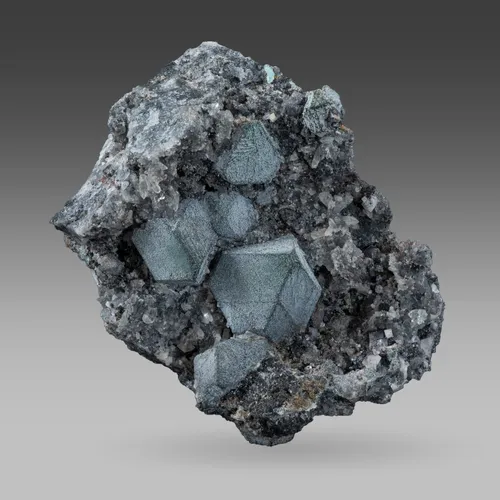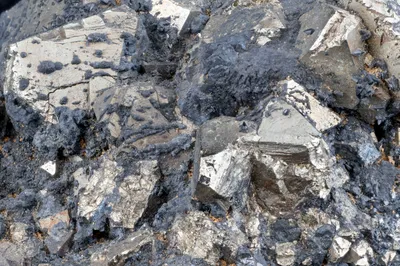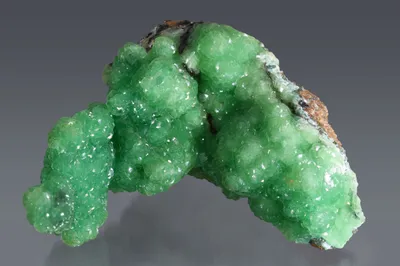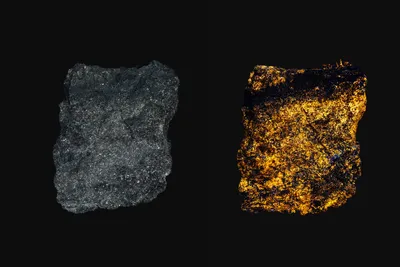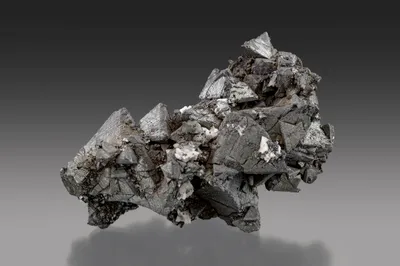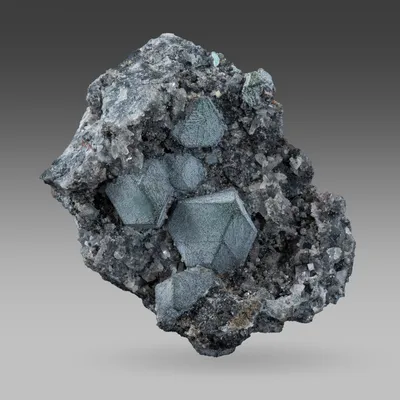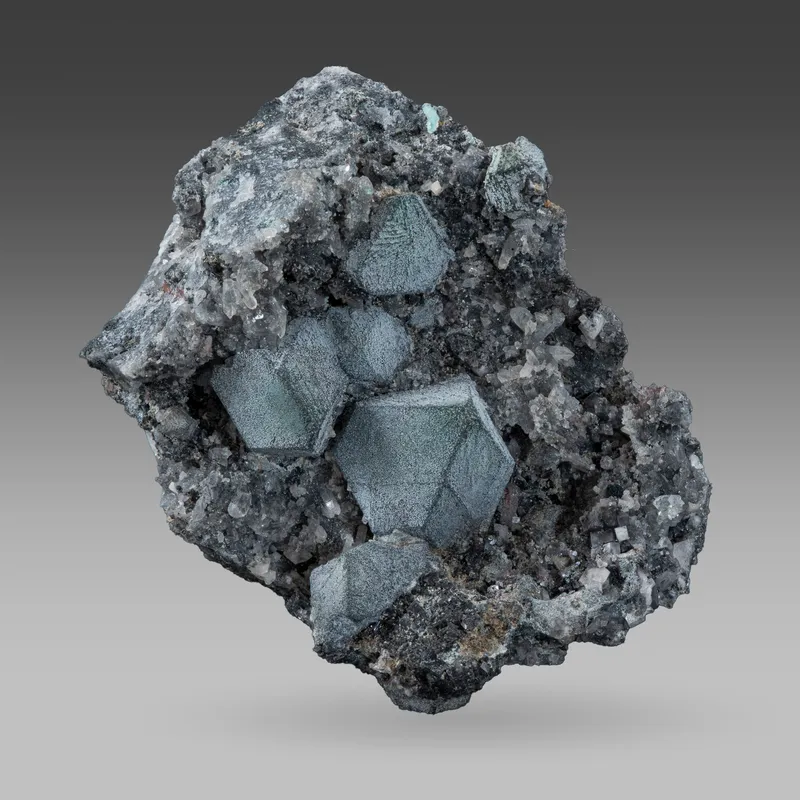
Image Credit: Malcolm Southwood
Mineral Species
Galena
Type Locality
No
Composition
PbS
Crystal System
Cubic
Status at Tsumeb
Confirmed
Abundance
Very common
Distribution
First, second and third oxidation zones; sulphide ores
Paragenesis
Hypogene; supergene (?)
Entry Number
Species; TSNB139
General Notes
The most important primary lead mineral at Tsumeb and, indeed, the single most abundant sulphide species is galena. Lombaard et al. (1986) recognised three main primary ore types: galena is a major component of both the "massive peripheral ores" and the "manto ores" but a relatively minor component of the "disseminated and stringer ores". Detailed information on the composition, mode of occurrence and spatial distribution of these ore types is presented by Lombaard et al. (1986).
Well-formed crystals of galena are somewhat uncommon at Tsumeb but they occur, typically, as combinations of cube {100} and octahedron {111} faces, seldom exceeding 10 mm (Pinch and Wilson 1977; Keller 1984) but occasionally to several centimetres (Bartelke 1976). Twinning is quite commonly observed, with "spinel" twins (on {111}) often developed and highly prized as specimens. Crystal faces of Tsumeb galena are commonly striated, with a pattern that is probably indicative of lamellar twinning possibly caused by mechanical deformation (see Ramdohr 1980).
According to Lombaard et al. (1986) Tsumeb galena typically carries between 25 – 40 ppm silver, with a maximum recorded content of 340 ppm.
Associated Minerals
acanthite; anglesite; baileychlore; bartelkeite; baryte; betekhtinite; bornite; calcite; carrolite; cerussite; chalcocite; chalcopyrite; digenite; djurleite; dolomite; edwardsite; enargite; feinglosite; freedite (?); gallite; galloplumbogummite; germanite; greenockite; gunningite; hematite; hemimorphite; hydroxylpyromorphite; kaolinite; kegelite; krieselite; ktenasite; larsenite; lauraniite; lavendulan; lazaridisite; leadhillite; mathewrogersite; mendipite (?); mimetite; molybdenite; munakataite; namuwite; niedermayrite; ovamboite; phosgenite; pyrite; queitite; quartz; renierite; rhodochrosite (?); roxbyite; senarmontite; sidpietersite; smithsonite; söhngeite; sphalerite; stannite; stranskiite; sulphur; tennantite-(Zn); wurtzite; zincite
Pseudomorphs
Galena is reported to form pseudomorphs after the following minerals: calcite (rare).
The following minerals are reported to form pseudomorphs after galena: cerussite (rare); rosasite (rare).
